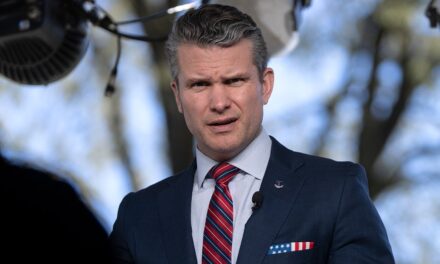The landscape of aerial warfare is evolving rapidly, driven by advancements in technology and changing battlefield dynamics. As nations invest heavily in military modernization, a significant question looms: how long will human pilots remain essential in combat aircraft within the U.S. military? This inquiry divides experts, fueling debates about the future of piloted aviation versus autonomous systems.
Historically, piloted aircraft have been pivotal in securing supremacy over the skies. The adrenaline of dogfighting, the precision of tactical maneuvers, and the strategic decisions made in real-time are hallmarks of piloting that modern technology seeks to replicate. However, unmanned aerial vehicles (UAVs) and artificial intelligence (AI) systems are progressively reshaping air combat’s operational framework.
One of the most significant developments is the rise of drone warfare, primarily used for intelligence, surveillance, reconnaissance, and targeted strikes. UAVs like the MQ-9 Reaper have already been operational for several years, showcasing their effectiveness in minimizing risk to human soldiers while achieving strategic objectives. This increased effectiveness raises questions regarding the necessity of traditional piloted aircraft, especially in roles previously held exclusively by human pilots.
Additionally, the advent of AI-integrated fighter jets has opened new avenues for management and combat operations. The U.S. Air Force is exploring options such as the Next Generation Air Dominance (NGAD) initiative, which aims to develop advanced, networked combat systems that include a variety of piloted and unpiloted aircraft working in tandem.
While these technologies present substantial advantages, proponents of keeping human pilots in the cockpit argue for the irreplaceable value of human judgment in complex combat scenarios. Situations often arise where machine calculations and algorithms fall short, as uncertainties of war can demand intuitive decisions based on experience and contextual understanding—qualities that remain challenging for AI to emulate fully.
The fundamental strength of human pilots lies in their ability to adapt, prioritize strategic objectives, and respond to rapidly changing environments. A piloted aircraft can engage in complex maneuvers that may require split-second decision-making beyond the operational capabilities of drones or autonomous systems. Moreover, the human element plays a crucial role in maintaining morale and providing reassurance in combat situations, aspects that AI and drones cannot replicate.
Nonetheless, integrating AI and unmanned aerial systems into military operations offers numerous benefits. For instance, they can operate in high-risk environments without endangering human lives, allowing military planners to undertake missions that would otherwise be deemed too perilous for traditional aircraft. Similarly, these systems can endure longer missions without fatigue and reduce operational costs associated with manned aircraft, such as training, wages, and support systems.
As the Pentagon invests in research and development of advanced drones and pilot-assist technologies, the question remains: how will this impact the role of human pilots moving forward? Some analysts suggest that human pilots will transition into more oversight roles, guiding and interpreting data from numerous unmanned systems, focusing on strategic decision-making rather than performing routine tasks.
The potential for collaboration between human pilots and AI is significant. In this hybrid model, humans might direct UAVs in combat situations while also maintaining the ability to engage directly when necessary. This kind of collaboration combines the strengths of both entities—the intuition and adaptability of a human pilot with the precision and endurance of a machine.
Moreover, the future may see human pilots entering the cockpit of increasingly sophisticated aircraft. Programs such as the Air Force Research Laboratory’s (AFRL) “Skyborg” project are aiming to develop drones that can autonomously conduct missions but also work alongside human pilots for a safer, more integrated approach to air combat.
However, the integration of technology introduces ethical considerations and dilemmas as well. The debate surrounding the implications of automated decision-making in military contexts is ongoing and complex. Many experts caution against relinquishing complete control of combat situations to machines, emphasizing the moral responsibility of warfare must lie with human decision-makers. The fear of machine error leading to unintended consequences underlines the importance of maintaining pilot presence in the cockpit, at least in the foreseeable future.
Looking at the international stage, other countries are advancing AI and UAV technologies, seeking to shift the balance of power in aerial warfare. The effectiveness and capability of nations like China and Russia in developing and deploying drone and AI systems pose a substantial challenge to U.S. military superiority. In response, the U.S. must continually analyze and adapt its strategies to maintain an edge in aerial combat. This might mean exploring new operational dimensions where human pilots coexist or partner with unmanned systems instead of being replaced.
Training requirements for future pilots will also evolve as advanced technologies play a larger role in military operations. Modern pilot training programs may increasingly incorporate simulations involving UAVs and AI, providing the skills necessary to operate in this integrated environment. Understanding how to collaborate effectively with drones will become a fundamental aspect of training the next generation of military pilots.
Beyond combat effectiveness, the necessity for human pilots also revolves around the psychological and social aspects of warfare. Human connections with the ground troops and the ability to empathize with situations on the battlefield cannot be programmed. Until technologies can imitate these emotional capacities, the need for human intervention remains. Pilots offer a human touch, bridging the gap between aerial combat and the soldiers on the ground, enhancing operational cohesion.
In conclusion, while technology is poised to revolutionize the landscape of aerial warfare significantly, the complete replacement of human pilots in the U.S. military appears unlikely in the immediate future. The current trajectory suggests an evolution rather than a replacement, with human pilots and advanced technologies adapting to coexist in a hybrid approach to air combat. This collaboration could usher in unprecedented operational capabilities, where the strengths of human innovation and machine efficiency meld to create a formidable force in the skies. The question now is not whether human pilots will endure but how their role will transform as we advance into the next generation of aerial warfare.
































